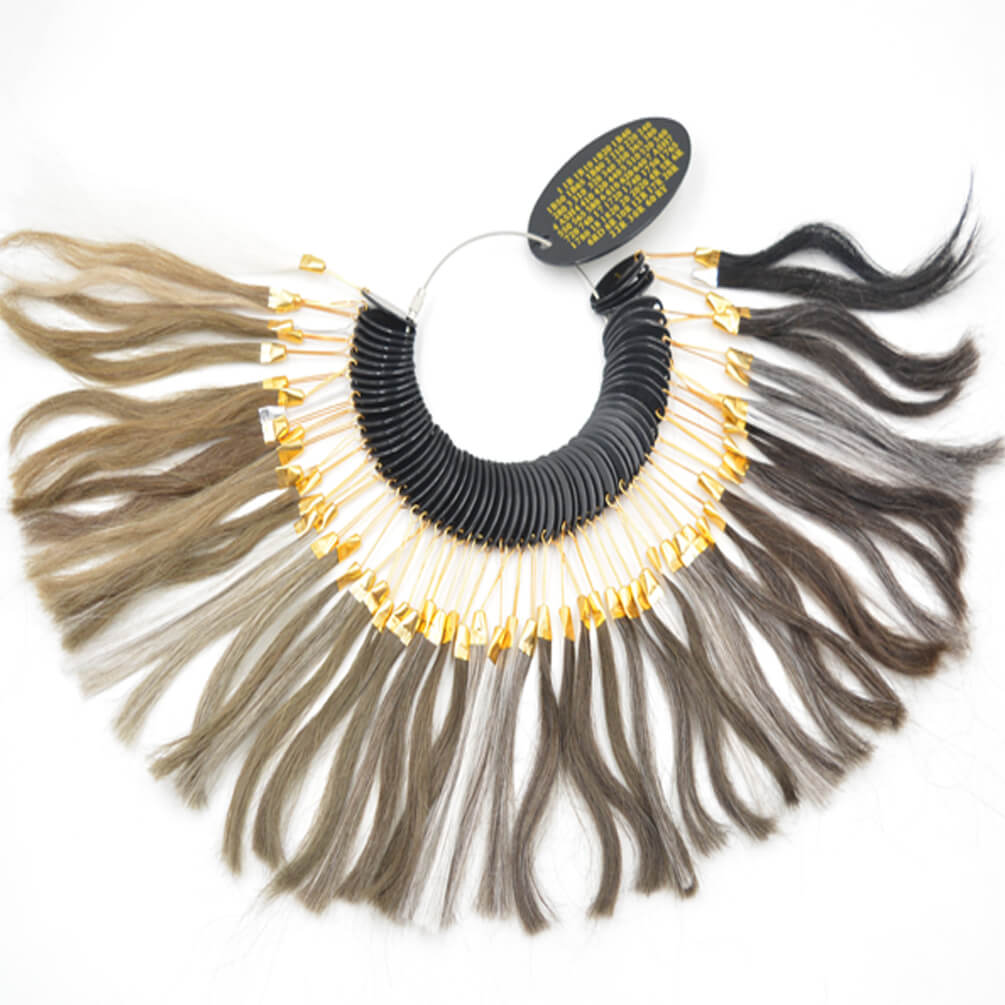Choosing the right hair color for your hair system can be a daunting task, especially if it’s your first time. Your hair color can greatly affect your overall appearance and confidence, so it’s essential to make a well-informed decision. Based on the insights from HairNoiton’s guide, here’s how you can pick the perfect hair color for your hair system.
1. Understand Your Skin Tone
The first step in choosing the right hair color is understanding your skin tone. Your skin tone determines which hair colors will complement your appearance.
- Warm Skin Tones: If you have warm undertones, your skin may have a golden or peachy hue. Hair colors that work best for warm tones include golden blondes, honey browns, chestnut, auburn, and rich copper shades.
- Cool Skin Tones: Cool undertones usually have hints of pink or blue. Ash blondes, cool browns, and jet black are great options for cool skin tones.
- Neutral Skin Tones: If your skin tone falls somewhere in between warm and cool, you can pull off a wide range of hair colors from dark to light, including neutral shades of brown, blonde, or black.
A quick tip to determine your skin tone is to check the veins on your wrist. If your veins appear blue or purple, you likely have cool undertones. If they appear greenish, you probably have warm undertones.
2. Consider Your Natural Hair Color
Choosing a color close to your natural hair color will provide the most seamless look. If you’re new to hair systems or want a more natural appearance, it’s always safe to go for a shade similar to your original hair color.
For those who want to experiment with new looks, you can explore different colors, but it’s important to make sure the color complements your skin tone and personal style. For instance, if you’re used to dark brown hair, but want to try blonde, make sure you choose a blonde shade that matches your undertone, like golden blonde for warm skin or ash blonde for cool skin.
3. Explore HairNotion’s Color Guide and Samples

Many hair system suppliers, including HairNotion, offer color guides and sample hair strands that allow you to see the exact shades before making a choice. You can request a sample or color ring to match against your natural hair or to get a better idea of how the color will look in real life.
Another handy tip is to compare the hair color under different lighting conditions. A hair color might look different in natural sunlight compared to indoor lighting. This helps ensure that the color you choose will meet your expectations in any environment.
4. Think About Hair Maintenance
It’s essential to consider the maintenance required for different hair colors. For instance, lighter shades of blonde may require more care, as they can fade or become brassy over time. You’ll need special shampoos and conditioners to maintain the brightness.
- Dark Hair Colors: Darker shades are generally easier to maintain and less prone to fading. However, darker colors can be less forgiving when it comes to showing signs of thinning or wear over time.
- Light Hair Colors: Lighter colors often require more upkeep to maintain vibrancy. Blonde, for example, can become yellowish if not cared for properly, so regular toning may be necessary.
5. Explore Highlights or Blended Colors
If you want your hair system to have more depth and dimension, consider highlights or lowlights. Blended colors can create a more natural, multi-tonal look, which is often more flattering than a single solid color.
For example, if you choose a medium brown base, adding honey or caramel highlights can bring warmth and texture to the overall look. Blended colors work particularly well for clients who want their hair system to closely mimic the natural variation found in real hair.
6. Take Lifestyle and Personality into Account
Your lifestyle and personality play a significant role in choosing the right hair color. If you prefer low-maintenance styles, it might be wise to stick to your natural hair color or go with a color that’s easy to maintain, like a rich brown or black. On the other hand, if you’re adventurous and don’t mind frequent touch-ups, experimenting with lighter colors or even unconventional shades could be fun.
For those looking for a professional look, neutral colors like dark brown, light brown, or subtle blonde shades are often a safe bet. For a more creative or bold look, you can try more vibrant or unconventional colors, depending on your preferences.
7. Take Inspiration from Celebrities or Current Trends
Many customers look to celebrities or current fashion trends when selecting a hair color. Celebrities often set the tone for popular hair colors, and following these trends can give you fresh ideas. However, keep in mind that what works for a celebrity might not always work for you, especially if their skin tone or hair type is very different from yours.
It’s always a good idea to find inspiration but tailor it to your personal look by considering factors like your skin tone and how well you can maintain the color.
8. Consult with a Professional
If you’re unsure about which color to choose, it’s always helpful to consult with a hair expert. At HairNotion, we offer professional consultation services where you can send us a photo of your current hair or your desired look, and we’ll help guide you toward the perfect color match.
Conclusion
Choosing the right hair color for your hair system can make a big difference in how natural and confident you feel. By understanding your skin tone, considering your natural hair color, exploring blended shades, and consulting professionals, you can make an informed decision that suits your look and lifestyle. Whether you’re opting for a subtle change or a dramatic transformation, the key is to select a shade that complements you and makes you feel great.
HairNotion is here to support you every step of the way in finding the perfect hair system color. Reach out to us for personalized advice and explore our color samples to find your ideal match!



